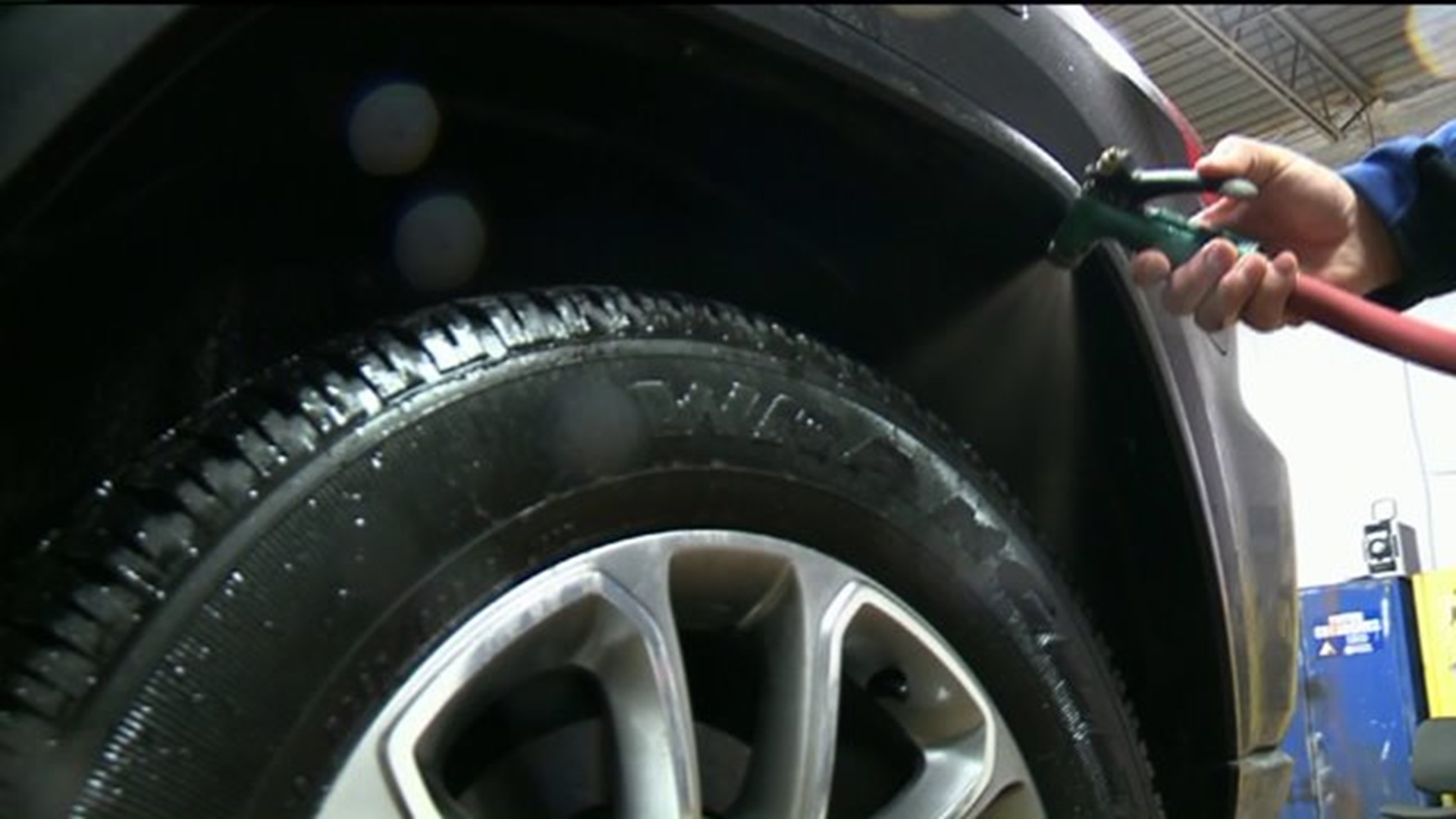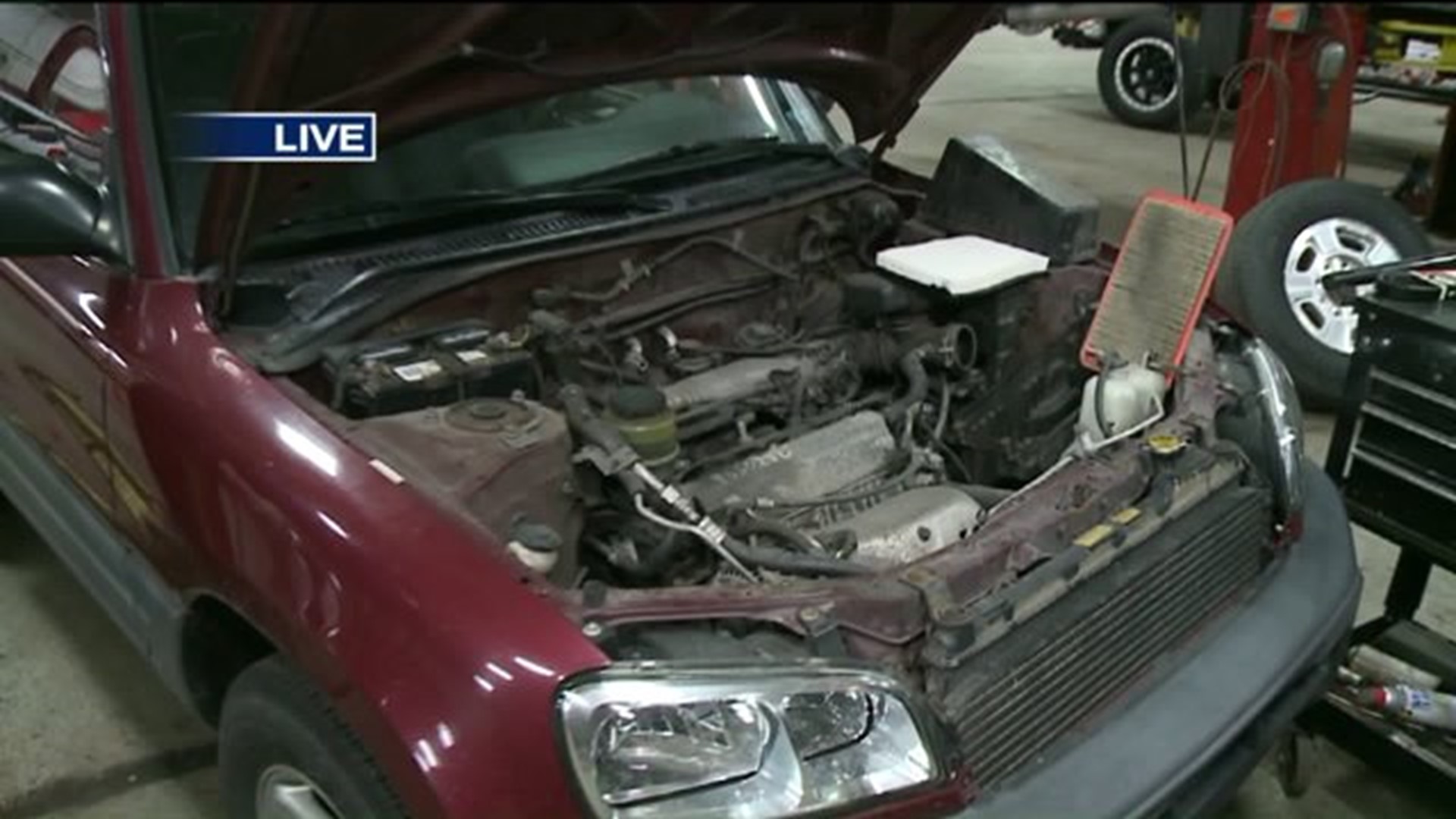KINGSTON -- With weather expected to warm up in a few weeks, now is a good time to start thinking about your car.
Newswatch 16's Ryan Leckey tackled tips Tuesday morning on how to get your car ready for the Spring in Luzerne County.
The snow may be gone, but car detailing experts said Winter's wrath may still be affecting all of our cars, no matter if you park outdoors overnight or in a garage.
From crud on your carpets, to salt in your wheel wheels. A few quick fixes could help get your ride ready for spring.
Over the long winter, sloppy and slushy roads were as common as the bitter cold. The salt used to keep drivers safe could be corroding your car inside and out.
"It ruins it," said Rich Mackarey with RPM Auto Detailing in Scranton. He adds that the first thing you should do is clean the crud from your car's carpets. 'If it`s really bad get a household hose, a degreaser, carpet cleaner. Scrub it off and let it dry completely before you put it back in."
He tells Newswatch 16 to use an ice scraper to get all of the water out if you need to dry your carpets faster.
As for those dirty door jams? Mackarey said, "You can wipe them out with an old cloth, just a regular garden hose. Spray some degreaser, 409 Citrus degreaser, and just hose it right out."
Instead of using a q-tip in your vents to clean them, use a household paintbrush. The brush will save you time, and clean out the mess.
A faster idea to clean the vents in your car is to use dust remover.
No matter what products you use on the inside of your vehicle, Mackarey said to test it on a small area before you use it.
"Don't use any detergent or household soap because that takes the wax off," adds Mackarey. Instead he suggest that you spend a bit more money on soap that's specially made to wash your car. "Get underneath the wheel wells and all of that, because that's where the salt sits."
Not to mention underneath your vehicle.
Another quick tip: Drive over a garden sprinkler to wash away that salty slime.
To learn more about RPM Auto Detail, click here.
Jack Williams Tire & Auto in Kingston offered some tips on what to look for when it comes to a Spring tune up.
The following are even more Spring car care tips from AAA North Penn in Scranton:
While many vehicles are designed to adapt to harsh winter conditions, most are still susceptible to rusting and corrosion caused by being exposed to snow removal substances too long. For this reason alone, it is important that motorists spend the necessary time wiping off snow properly and giving their vehicles a good cleansing.
AAA recommends that motorists do a thorough check under the hood and around in the interior and exterior of their vehicle.
• Check the tires – It’s crucial to check your tires after weather changes because tire pressure can fluctuate about 1 pound per square inch for every 10 degrees Fahrenheit change in temperature.
• Rotate the tires – This should be done roughly every 5,000-10,000 miles and it can extend the life of your tires significantly by reducing wear.
• Check the wiper blades – Windshield wipers take a beating during the winter – clearing away dirt, debris and salt spray. Make sure the blades are making full contact with the windshield and have not dried out.
• Change oil and filter – Keep to the manufacturers’ recommendation and change your oil and filter in accordance with the vehicle owner’s manual. Usually every 3,000 to 5,000 miles.
• Change the air filter – Your car’s air filter prevents dust and other debris from getting into the engine’s running parts, meaning less efficient use of gas and weaker engine performance.
• Check the belts and hoses – Winter weather takes a toll on your car’s belts and hoses making them more likely to break. Visibly inspect them for wear. Replace glazed or frayed belts or bulging hoses.
• Check the coolant level - With a cold engine, the radiator should be completely full and the coolant level in the remote reservoir should be at or above the “cold” level marking. Have the system flushed and refilled with fresh coolant at the interval specified in the vehicle owner’s manual. Always top off the system with a 50/50 mixture of coolant and water to avoid altering the antifreeze level.
• Inspect the brake fluid level - If the level has fallen below the “low” mark on the fluid reservoir, it usually indicates major brake wear or a leak somewhere in the system; have the brakes inspected as soon as possible.
• Check battery and plugs – Make sure battery posts and connections are clean. Spark plugs fire as many as 3 million times every 1,000 miles.
• Clean the interior – Residual salt and sand that was brought into the interior of the vehicle can damage floor mats and carpet. Use a hand vacuum to remove dirt and debris from the floor and seats of your vehicle.
• Remove items that may have been used for winter driving – There’s no need to carry sand, shovels and other winter driving “musts” once the snow and ice have melted. Keep your trunk clean to improve gas mileage which can lead to considerable savings at the pump.
• Prepare the interior surfaces and upholstery of your car for more sun exposure – Use a good leather protector to avoid any cracking on leather seats and invest in a product that will help avoid fading cloth interiors.


